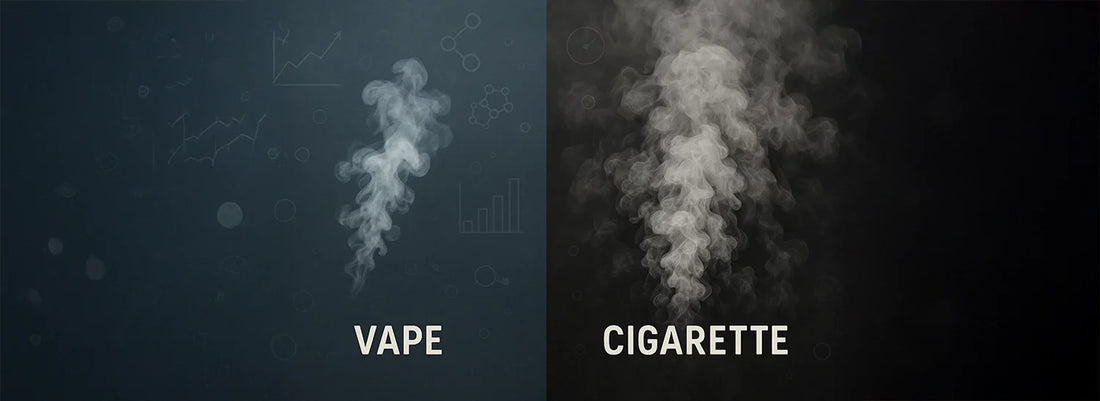
Secondhand Vapor: What Science Really Says
If you’ve ever vaped in public — or been near someone who does — you’ve probably wondered: is secondhand vapor dangerous? How does it compare to secondhand smoke from cigarettes? With more people switching to vapes, understanding secondhand vapor exposure has never been more relevant. So, what does the science actually say?
First things first: What is secondhand vapor?
Secondhand vapor (also called aerosol) is the cloud you see when someone exhales from an e-cigarette. Unlike traditional cigarettes, there’s no combustion — just vaporized e-liquid. That makes a big difference in what bystanders are exposed to.
How is it different from secondhand smoke?
🔥 Cigarette smoke:
- Contains over 7,000 chemicals
- Includes tar, carbon monoxide, and carcinogens
- Linked to cancer, heart disease, and respiratory illnesses
💨 Vape aerosol:
- Mostly water vapor, propylene glycol, vegetable glycerin, flavourings, and nicotine (if present)
- Far fewer toxic substances than cigarette smoke
- No tar, no combustion, no carbon monoxide
What the research says about secondhand vapor exposure
Multiple studies have looked into the health risks of passive vaping. Here's what we know so far:
1. Far fewer toxins
Public Health England and the Royal College of Physicians both found that e-cigarettes emit significantly fewer harmful chemicals compared to traditional cigarettes. The difference isn’t minor — it’s massive.
2. Minimal health impact for bystanders
According to a 2022 study published in *Tobacco Control*, the levels of nicotine, aldehydes, and particles in secondhand vapor are generally too low to pose a health risk to non-vapers under normal conditions.
3. No carbon monoxide or tar
Unlike cigarette smoke, vape aerosol doesn’t contain carbon monoxide or tar — two of the most damaging elements of smoking. This makes secondhand vapor much less of a concern for indoor air quality.
Are there any risks at all?
Yes, but they’re relatively minor compared to secondhand smoke:
- Nicotine exposure – Still possible, especially in enclosed spaces. It’s lower than cigarettes but worth noting if kids or pregnant people are nearby.
- Allergic reactions – Some people may be sensitive to PG, VG, or certain flavourings in vapor.
- Aerosol particles – While fewer than smoke, fine particles still exist. Long-term effects are still being studied.
What health authorities say in the UK
Public Health England (now part of the Office for Health Improvement and Disparities) has consistently supported vaping as a harm-reduction tool. They’ve also made it clear: the risks of passive vaping are minimal compared to smoking.
"While vaping is not risk-free, the levels of exposure to toxicants in secondhand vapor are significantly lower than in tobacco smoke." — UK Government 2023 Review
Vaping indoors: Etiquette vs safety
Just because it’s technically safer doesn’t mean it’s always socially acceptable. Good vaping etiquette still matters:
- Ask before vaping indoors
- Avoid vaping near children or pets
- Use low-smell or stealthier flavours in shared spaces
Secondhand vapor and kids — what parents should know
While the science shows low health risks, the precautionary principle applies. Experts recommend avoiding vaping around young children, just in case — especially indoors or in cars. Better safe than sorry, right?
Final thoughts
So, is secondhand vapor harmful? Not in the way cigarette smoke is. Most of the evidence so far points to minimal risk, especially in well-ventilated areas. Still, being considerate and responsible is key — just like with anything else in life.
Stay informed. Vape responsibly.
At Vape Lounge UK, we believe in smart, informed vaping. Whether you're new to vaping or a longtime user, understanding the facts around secondhand vapor exposure helps us all make better decisions. Explore our products and stay part of the harm-reduction movement today.
